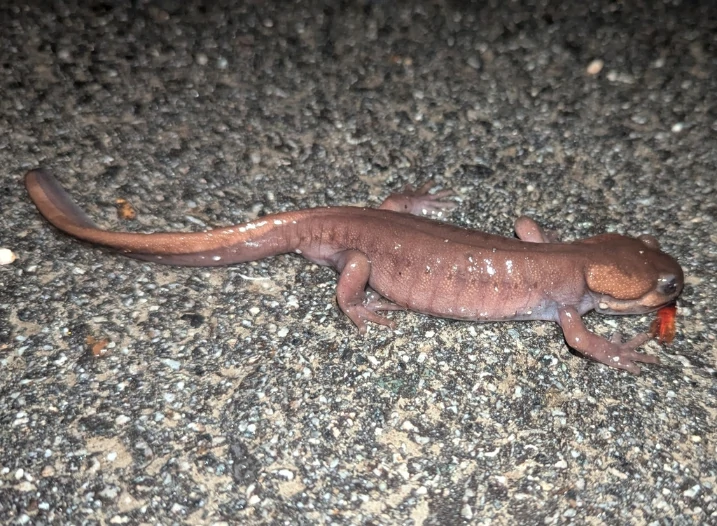Salamanders are fascinating little creatures that often capture our curiosity when we find them in the wild. But before you decide to bring a wild salamander home, it’s important to know whether it’s a good idea and what the legal and ethical considerations are.
In most cases, you should not keep wild salamanders as pets. It is often illegal, harmful to the animal, and bad for local ecosystems. Captive-bred salamanders are a safer and more ethical choice for a pet.
Legal Considerations Around Keeping Wild Salamanders
Many countries and states have laws that protect wild amphibians, including salamanders. These laws exist because many salamander species are in decline due to habitat loss, pollution, disease, and climate change.
These protections help ensure wild populations are not disturbed or harmed by human interference.
For example, in the United States, several salamander species are protected under federal or state regulations.

Taking a wild salamander without a permit can lead to fines or other penalties. The same is true in parts of Europe, including the UK, where amphibians are often protected by law.
It is important to remember that these laws are there for good reasons. They help prevent over-collection and protect fragile populations from further decline.
Before you consider taking any wild animal home, it’s always a good idea to research the rules and regulations in your area.
Ignorance of the law will not protect you from penalties, and violating these protections can harm the environment.
Why Taking Wild Salamanders Can Be Harmful
Taking salamanders from their natural habitat can harm both the individual animals and the ecosystem they belong to.
Salamanders play important roles in nature, including controlling insect populations and serving as food for larger animals. Removing them disrupts these natural balances.
Stress and Mortality in Captivity
Wild salamanders are not used to captivity. Moving them from the wild to a home environment can cause intense stress.
Stress weakens their immune system and often leads to early death. Many wild salamanders do not survive long in captivity because it’s difficult to recreate their natural conditions.
Factors like humidity, temperature, and diet are challenging to replicate accurately at home.
Even if a salamander survives the initial shock of capture, long-term survival is uncertain without proper care.
Inexperienced owners may not realize the specialized needs these animals require, leading to neglect or accidental harm.
Impact on Local Populations
Removing salamanders from the wild reduces the local breeding population. This can hurt the overall health of the population and increase the risk of local extinction, especially for species that are already threatened or endangered.

Many salamander species have limited ranges, so even a small number taken can have a big impact.
Populations rely on a sufficient number of breeding adults to maintain healthy numbers.
When too many are removed, the gene pool shrinks, and populations become more vulnerable to disease, habitat changes, and other threats.
Disease Risks
Moving wild salamanders can spread diseases like chytrid fungus, which has devastated amphibian populations worldwide.
This disease causes deadly skin infections in amphibians and has led to population collapses in many areas.
Transporting salamanders between regions risks infecting healthy populations with chytrid or other pathogens. Even handling wild amphibians without proper hygiene can spread these diseases.
Differences Between Wild and Captive-Bred Salamanders
Captive-bred salamanders are bred in controlled environments that provide for their specific needs. These animals are often healthier, more accustomed to handling, and more likely to thrive in captivity.
Breeders work to replicate natural conditions such as temperature, humidity, and diet, giving captive-bred salamanders a better chance at survival and long-term health.

Because these animals have been raised in captivity, they tend to be less stressed by human interaction.
In contrast, wild salamanders face a harsh adjustment to living in a tank. They are stressed by artificial lighting, different temperatures, and new diets.
Many wild-caught salamanders fail to adapt, leading to poor health or early death.
Choosing captive-bred salamanders supports sustainable pet ownership and helps protect wild populations from decline due to collection.
How to Care for a Wild Salamander Temporarily
If you find a wild salamander injured or in danger and need to care for it temporarily, you should create a safe environment that mimics its natural habitat as closely as possible.
Provide a cool, moist enclosure with natural substrate like damp moss or leaf litter.
Keep the habitat away from direct sunlight and maintain clean water. Feed the salamander live insects like crickets or worms.
Avoid handling the salamander too much, as excessive stress can harm it. Keep the enclosure quiet and humid to reduce stress.
The goal should be to reduce stress and return the salamander to the wild as soon as possible. Prolonged captivity is rarely in the salamander’s best interest unless it is injured and requires rehabilitation.
Ethical Ways to Enjoy Salamanders
If you enjoy salamanders but want to respect wildlife, here are some good ways to do so:
Observe wild salamanders without touching or disturbing them. Watching them in their natural environment can be rewarding and educational.
Build a salamander-friendly garden with native plants and damp hiding spots to attract wild salamanders safely. This helps local populations thrive while allowing you to enjoy them at home.
Support conservation efforts that protect salamander habitats. Many organizations work to preserve wetlands and forests that salamanders rely on.
Purchase captive-bred salamanders from reputable breeders if you want a pet. This ensures you are not harming wild populations and helps maintain healthy captive populations.
Conclusion
Keeping wild salamanders as pets is generally a bad idea. It is often illegal and harmful to both the animal and the environment. Wild salamanders are sensitive and require specialized care that is difficult to provide at home.
Choosing captive-bred salamanders and supporting conservation efforts is a better way to enjoy these fascinating creatures responsibly.
Hi, my name is Ezra Mushala, i have been interested animals all my life. I am the main author and editor here at snakeinformer.com.

